Managing Disc Herniation and Alleviating Sciatica: Tips and Tricks 1
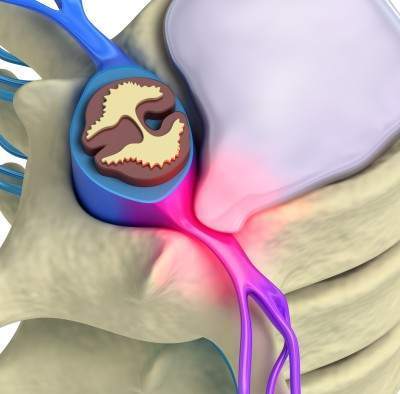
Suffering from disc herniation? Experiencing sharp pains shooting through your buttock, thigh, and leg due to sciatica? If your daily routine is disrupted by the discomfort of disc herniation, there’s hope. Many people find relief without needing surgery. This post will guide you through lifestyle changes to support your recovery from disc herniation. Stay tuned for our next piece, where we’ll explore exercises to correct and stabilize your condition.
Ultimate Guide To Exercises For Lumbar Disc Herniation Relief
Mary’s Story: A Wake-Up Call
Imagine starting your day like any other, performing your routine toe touches, when suddenly you’re hit with an excruciating pain radiating from your lower back down to your toes. This was Mary’s reality when she encountered a lumbar disc herniation, commonly referred to as a slipped or ruptured disc. Such incidents can lead to what’s known as sciatica or radiculopathy, terms doctors use to describe the pain that extends down your leg.
Understanding Lumbar Disc Herniation:
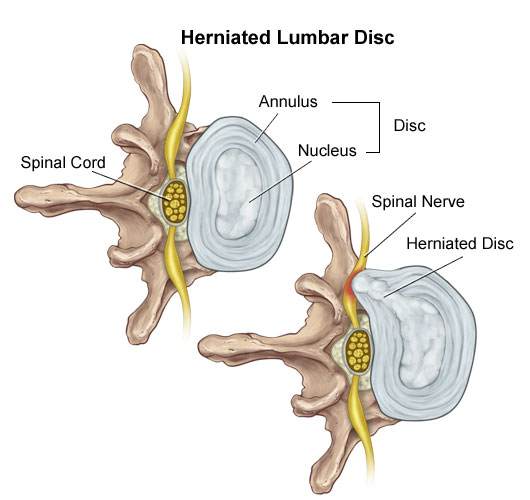
A glimpse into the anatomy of a herniated disc reveals two main components: the tough outer annulus and the softer, inner nucleus. Dr. Stuart McGill likens the nucleus to sticky phlegm. When Mary bent forward, it was akin to squeezing the front of a jelly doughnut, pushing the inner material backwards and eventually causing the disc to bulge and press on a nerve.
The Culprit Behind the Pain:
Mary’s disc herniation wasn’t a sudden mishap but the result of years of repetitive motions like toe touching and prolonged slouching at her desk. These habits gradually weakened her disc, leading to the moment when it finally herniated and impacted her nerve. The lack of nerves within the disc itself means significant damage can occur without immediate pain, explaining why the problem might not be felt until it’s severe.
A Lesson Learned:
The story underscores the importance of posture and the dangers of neglecting spinal health. While the advice to “sit up straight” might seem simplistic, maintaining the natural curve of your back is crucial. Mary’s experience serves as a potent reminder of the long-term consequences of poor posture.
Disc herniations don’t have to dictate your life. By understanding the causes and adopting preventive measures, you can manage and alleviate your symptoms.
Understanding Disc Herniation: Pain, Prevention, and Care
The Unseen Progression of Disc Herniation (see picture above)
- Bulging Disc: Early stages where the disc starts to protrude due to wear and tear.
- Prolapsed Disc: The disc bulges more as it degenerates, but the nucleus remains contained.
- Extruded Disc: The protective layers give way, pressing on nerves and causing pain.
- Sequestrated Disc: The most severe stage, where disc fragments break away, potentially compressing nerves or the spinal cord.
See Also: MRI, CT scan and X-rays: Is an MRI, CT Scan or X-ray Best For My Pain?
Why Me? The Role of Movement and Genetics in Disc Herniations
Surprisingly, your daily habits and genetic makeup play pivotal roles in disc health. While we can’t choose our genetics, modifying daily movements can significantly reduce the risk of herniation. Proper lifting techniques and posture adjustments are crucial first steps.
Simple Changes, Major Impacts: Daily Habits and Exercise
To protect your spine:
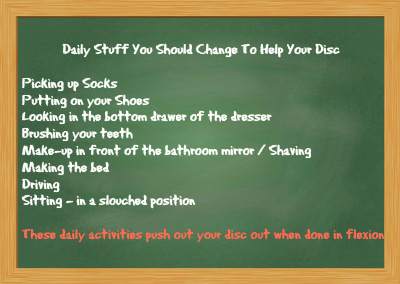
- Adjust Daily Habits: Learn to perform everyday activities in spine-friendly ways to prevent further disc damage.
- Disc-Specific Exercises: Exercises can help reposition the herniated disc.
- Stabilization Routines: Strengthening your core helps maintain spinal integrity, preventing future herniations.
Lifting Techniques: How Weight Lifters Should Lift
Master the Basic Butt-Lifting Technique for Disc Health
- Practice with a long, straight object to ensure your back remains aligned.
- Ensure it touches your butt, mid-back, and the back of your head during the entire motion.
- Squat down and maintain contact with 3 areas and keep the lower back arched the whole time.
- Aim for 30 repetitions to embed this healthy habit into your daily routine for 10 days
Daily Activity Guide: Protecting Your Discs
Then you integrate this lifting technique into everyday life. Initially, whenever you do any of these activities, use the same basic move and you will stop pushing out your disc.
In the beginning, you will need to be conscious each time you are doing any of these activities. To speed things up you can practice each activity like picking up your socks 30 times using the butt lifting technique and it will become even more automatic. You can deepen muscle memory during all of these activities.
For sitting in a chair and driving I recommend that you roll up a Mckenzie Lumbar support roll and put that in the arch of your lower back
Guide for disc herniation daily activities.
- Remember to do all these movements pain-free. Always stop whenever you run into pain with any movement of the spine.
- Disc herniations are linked with long periods of sitting, especially prolonged driving.
- Disc herniations are caused by repeated flexion.
- Prolonged trunk flexion or twisted or bend sideways cause disc herniations.
- Too much lifting, pushing/pulling causes disc herniations
- Vibration while sitting is linked to disc herniations.
- After prolonged stooping or sitting, you should stand. For example, a gardener lifting bags of peat moss after having a prolonged period of rounded lower back, or a driver getting heavy loads out of the trunk after a long drive is not recommended. You should remember to stand for a few minutes before attempting to lift. Studies have shown that ½ hour is even better.
Here are some more exercises that can cause disc herniation.
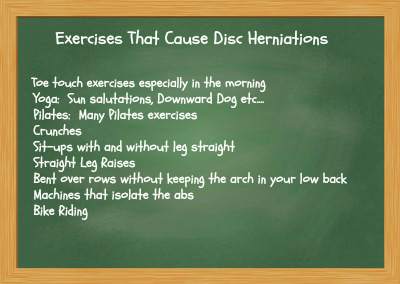
Activities That Put Out Lumbar Disc Herniations
Yes, it’s very surprising that toe touches, Yoga and certain Pilates can cause disc pressure leading to disc herniations. I have personally treated dozens of Yoga teachers with varying degrees of experience. The fact is some of the exercises involved in Yoga are great for helping disc herniations while others directly push the disc out.
Many Yoga Exercises Put Out Disc Herniations
I know many Yogis who have had to stop many of their exercises due to the pain it cause them in various parts of the body, including their disc.
Next week’s article will go over the second and third ways to help your disc. Remember, you need to do #1 “Daily Disc Activities Correctly” first so that your disc doesn’t keep getting aggravated. Then you can move on to next week’s article which goes over #2 Disc Exercises to Push the Disc Back In and #3 Stabilization Exercises help by keeping the disc from coming out by normalizing how your spine moves.
Looking Ahead: Comprehensive Care for Disc Health
Next week, we delve deeper into specific exercises for disc realignment and stabilization techniques, in this article called Ultimate Guide To Exercises For Lumbar Disc Herniation Relief. Remember, starting with correct daily activities is essential to prevent aggravating your condition further.
Tell us what you think in the comments below and like us on Facebook. This Toronto Downtown Chiropractor will answer all questions in the comments section.
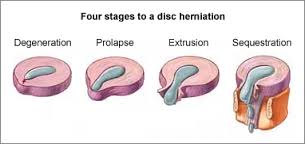
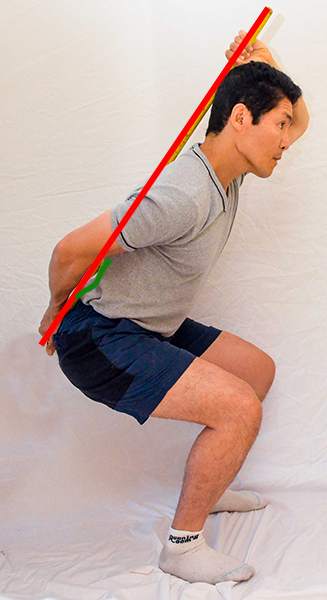


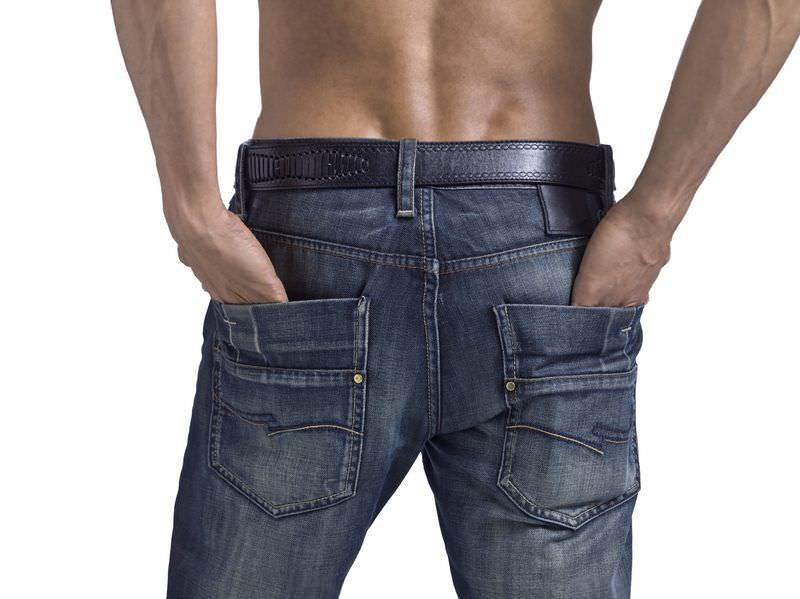


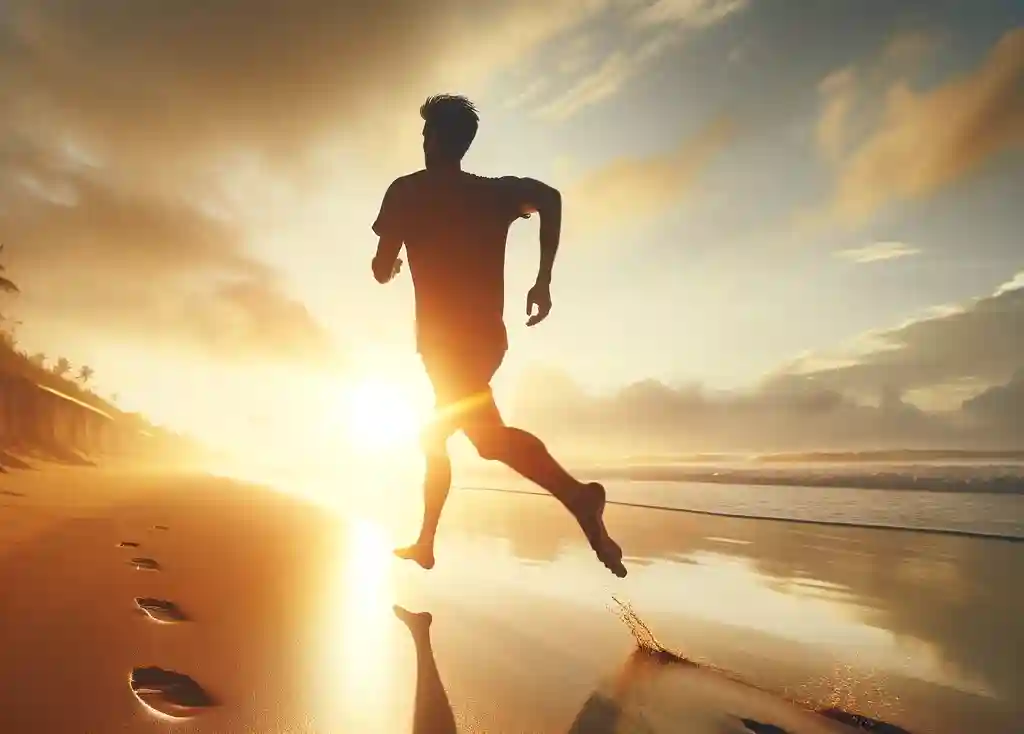
Thank u very much sir, thanks for ur valuable advise sir. I will follow ur advise.
Author
You are welcome Satya.
Thank you sir. I will follow your instructions.
Sir, I have been suffering with sciatica causing L5-S1 herniated disk since last 3weeks. Somebody advised me that, hanging on Pull-Up bar traction is good for herniated disk. Kindly advise me hanging on “PULL-UP BAR” traction is Good or Bad for Sciatica causing L5-S1 Herniated disk.
Author
Thanks for your question Satya. Usually it helps if the disc is not sticking out too much. However when the disc is large you can get rebound pain. For example when you hang it feels good. Then when you let go of the bar it causes immediate sharp pain. When this happens you usually don’t find any benefit from the traction. For others it just causes pain right away. When the disc is small though you will usually find you get better and better.
Ideally the bar is at your standing height and you just bend your knees to hang and straighten your knees to stop the traction. Also you need somebody there to help you. Do not do this if you need to go on a chair to hang as you can be seriously injured.
Hope that helps your sciatica.
Author
You are welcome Satya.
Sir, I am suffering with sciatica causing L5-S1 herniated disk since last 3 weeks. I am follow ur valuable articles and doing exercises regularly. Now just better. But the problem is after doing “COBRA” exercises and back bending by standing my buttock was strucked and rising pain since last 2 days. My spine was not straighten for fer seconds after get up from sitting and sleeping. Kindly enable me for this. Regards
Author
Thanks for your question Satya. You need to stop the exercises. You may try the exercises lying down but you have to be aware that they may make you worse like any other exercises. These exercises should be supervised by a health practitioner.
Hope that helps your disc herniation.
Hi Dr Ken,
I’m writing my problem to get some help which can reduce my back pain. 6 months back i did heavy work like lifting and carrying heavy weights during my cousin’s ceremony, after that my lower back started paining, i took some pain killer tablets to get rid of the pain completely where it did not even help me. Then i gone to acupuncturist who touched active points on my body, where this as well given me temporary relief not complete. 20 days back i consulted Neuro-physician, he asked me to get LS MRI. In the report i have seen few pics like Disc Gel is compressing the spine nerve root, L5 S1 Disc Protrusion and compression of nerve root. If i do some stretches pain is becoming worst. The Nero Physician suggest me to take nerocalplus capsule and Maxgalin MER 75 tablets for 1 month, if the pain is not gettting reduced seems i have to go through surgery.
I would request your help which i can decompress the nerve root in a easy way, highly appreciated if i get a reply from you.
Thank you!!
`Srini
Author
Thanks for your question Srini. I like the fact that your surgeon is recommending conservative therapy before saying he should do surgery. If I were in your situation I would try several different therapist to see if you can improve your pain. Go at least 4 weeks at least 2/week to a therapist to see if it will help. Try to see one with a great reputation in your area. Go through friends recommendations and reviews to find a good chiropractor or physiotherapist.
Hope that helps your disc protrusion.
Thank you for your response Dr. Ken I really appreciate it. I can do all of these exercises pain free. I checked up with another doctor about my structure. She believes my hamstrings and glutes are extremely tight(which they are) and could be the reason why I can feel sciatica rarely. She doesn’t even think it has to do with my disc, but part of me feels that it’s being compressed because of the structure. Any thoughts on this?
Author
Thanks for your question Eric. Why don’t you go with the doctor says since she examined you. Having said that I will comment that it’s very normal for the glut medius and hamstring to be tight. Also that is the variable nature of a disc herniation especially if you are avoiding bad positions that aggravate your back you wouldn’t get sciatica as much.
You should see if you will get better with her treatment. Give her a month, at least 8 visits in that month. That would give her a fair chance to get you better.
Hope that helps your low back pain.
Hello Dr. Ken. Back in February I injured my lower back while deadlifting in the area which I believe to be my L5-S1. I am 21 years old more worried then ever. I went to PT and it helped reduce the pain. I had a chiropractor before this incident and my back felt better than ever. I stopped seeing him because I felt that he was going to make it worse after the injury. Before I stopped going to the chiropractor he told me my right leg was about a half inch shorter then my left. My structure is definitely off. I can see it measuring my knees doing bridges and also notice it if I were to lean forward in the mirror(such as a Goodmoring) and my torso is not in line. It’s been almost a year and the pain is lingering again. I feel pain in my left Glute and sciatica occasionally. I think my structure is going to keep bothering the disc and eventually make it worse which worries me because I am so young and don’t want to go to a chiropractor to get re aligned if its only going to cause more harm then good. Any suggestions from you would be great and your thoughts on a chiropractor or any other care. Thank you
Author
Thanks for your question Eric. First you need to stop aggravating your pain. If you follow the directions in this article you will stop aggravating the disc so that you can get better. After you can do these exercises. https://www.bodiempowerment.com/herniated-disc-part-2-the-best-exercises-for-your-herniated-disc/
IF the pain or symptoms go further down the leg you should stop the exercises.
As for chiropractors, unfortunately there are bad chiropractors an good ones like any other profession. If they don’t know enough to stop aggravating your problem then they are not one of the good ones. I would steer clear and go to a different chiropractor.
Hope that helps your disc herniation.
I must add that his pre-op consultation with the neurosurgeon resulted in the surgeon postponing the surgery until early 2016 as he felt that our son was getting better. However, we were never given an explanation for this.
Author
Thanks Sandra for your query. Well I would say that you should always do conservative therapy first and if you have been postponed this is certainly not an emergency. Try doing the exercises here https://www.bodiempowerment.com/herniated-disc-part-2-the-best-exercises-for-your-herniated-disc/
Or better yet get professional help as I am not able to examine your son.
With the exercises if the pain gets worse or symptoms go further down the leg then you are getting worse. Then you should stop the exercises.
Hope that helps your son’s disc herniation.
Our son has suffered from severe pain from a herniated disc since April. He has see a chiropractor, has had massages and has done physiotherapy. A recent MRI confirmed that he had a large herniated disc and was scheduled for surgery on Nov. 30th. In the meantime, for no apparent reason, while walking he felt a sudden pain in his back and was unable to stand or move for 2 days. A visit at the emergency room resulted in a shot of valium to help relax his muscles. Five days later he was able to resume normal activities although he still has back pain. What I am curious about is the fact that since his injury, the original pain caused by the herniated disc has improved and he has more mobility in his leg than he had before. Can you help us understand what may have caused this shift in the condition? Is it possible to recover from a large herniated disc without surgery? Any insight will be most appreciated.
Author
Thanks for your question Sandra. A disc herniation often moves around. Doing certain movements will make a disc come out more while other movement will often help push it back in. Sounds like the disc came out more and then with the Vallium the muscles relaxed so that the disc is squeezed so much, allowing it to shift back in.
This is normal for a disc.
Hope that helps your understanding of disc herniations.
hi, dr ken I wanna ask about my sciatic pain actually , I am having sciatic pain since 3 years and can”t take it anymore. it starts exactly from the right lateralside of sacrococcegeal junction radiates to right posterolateral buttuck , posterior thigh , lateral side of knee joint and lateral calf actually its a burning pain inn calf and right lateral side of foot is always cold and there is numbness and tingling.
I have had an epidural injection which helped me for few weeks.but again relapsed.
plz tell me exactly what it is? some doctors say its piriformis syndrome, some say dics herniation and some say its a spinal stenosis. plz also tell me why it is burning ?
Author
Thanks for your question Rabia. I can’t tell you what it is without examining you and taking a proper history but spinal stenosis is usually happens to older people in their 60’s or older. Unless you were born with the stenosis which is possible and you are not in that age group chances are that the disc is pushing on spinal cord causing you to have cold sensations in your foot. This means it takes up space in the space where your spinal cord which is the definition of spinal stenosis. So the disc herniation is the cause and spinal stenosis is the result.
The diagnosis in that case would be disc herniation causing stenosis. The diagnosis is not stenosis. Also the cold would not be explained by piriformis syndrome so it’s not likely.
Try these exercises. https://www.bodiempowerment.com/herniated-disc-part-2-the-best-exercises-for-your-herniated-disc/
If the exercises increase the pain or send symptoms such as numbness, tingling or pain further down the leg then you are getting worse. In that case you should immediately stop the exercises.
Hope that helps your disc herniation.
Good day
Im 25 and have been struggling with a slipped disc L4&L5 for the past 3 months. I have been going to a Chirico at least once every second week and have been doing my exercises along with the does and dont but yet the numbness in my leg and arm doesnt want to go away at stages i get it in both my leg and the last week my left side of my shoulder started to pain more often what else can i do as at a stage i could not get up or even walk . Im at the point where i cant take the pain any more
Author
Thanks for your question Cindy. What don’t you try these exercises. https://www.bodiempowerment.com/herniated-disc-part-2-the-best-exercises-for-your-herniated-disc/
These exercises should be supervised by a health care practitioner. If the pain, numbness or tingling goes further down the leg then you are getting worse and should stop the exercises.
Also you can try self massage on your leg
Hope that helps your disc herniation.
Dear Dr. Ken
I am 32 old femal suffering from lower back pain. My MRI says
1. L4-5 shows central disc extrusion with several lateral recess stenosis .
2. L5-s1 shows mild central annular fissure
3. DDD on l4-l5
My burning pain is little better now but still hurts when I walk and stand up . No pain on my back.Please help me what exercise is good for me.
Author
Thanks for your question Deepa. You need to say more than your MRI results like what symptoms you have for me to comment.
Thank you for responding sir. From sept 13 I have a burning and shooting pain on my thigh, under back of my knee and on my left calf .if I stand up it burns on my left leg and it feel like some of the nerve is pulling my left ankle. I couldn’t stand up for a minute. 24 /7 I have to take painkillers . My doctor prescribed me oral steroid that helped me a lot.now I can walk little bit without painkiller and my shooting pain is gone but still have some of the burning pain. Is their any exercise that will help me ?
Author
Thanks for your question Deepa. You should continue the prescription until they are done when they are done you can try these exercises. Try them earlier and they will likely hurt you.
https://www.bodiempowerment.com/herniated-disc-part-2-the-best-exercises-for-your-herniated-disc/
The exercises should be supervised by a health care practitioner. If the pain increases or the symptoms go further down the leg than you are getting worse and you should stop. When I say symptoms I mean numbness, tingling or pain.
Hope that helps your disc herniation Deepa.
Dear Dr Ken Nakamura,
I am a 32yrs old, male,software engineer working(desk job) continously for 13-14hours a day. I have been suffering from pain in lower back and left buttock since 3 months. After the MRI scan, the Neuro surgeon has confirmed that it is a very minor issue.
FYI – My MRI impression:1) Posterior left far lateral disc protrusion is seen at L4/5 level with possible minimal left L4 exiting nerve root impingement.
2) Disc desiccation and posterior annular tear with posterior left paracentral disc protrusion at L5/S1 level causing minimal compression of left L5 and S1 nerve roots.
I am undergoing physiotherapy treatment(electrotherapy and traction) with basic exercises like cobra exercise since last 2 weeks with bed rest.
Since last 2 days, the pain in left buttock has been shifted to the right one. Also i experienced a momentary slight pain in ‘heel bone calcaneus’ 3 times (not continously) in last 2days.
I would like to know whether this is a major issue?
Is it a symptom of Sciatica?
Kindly please suggest the suitable exercises and sitting, sleeping postures for my issue.
Thank you very much for your kindness.
Kind Regards,
Panduranga Krishna Das Reddy
Author
Thanks for your question Panduranga. Sounds like the disc is shifting places but not necessarily getting worse. If it stays in the heel I would start getting concerned. Otherwise if it goes away than I think you will likely be fine.
Hope that helps your disc herniation.
Thank you very much for your response. Pain in heels gone away,but it still stays in hips. Please suggest some suitable exercises for me.
Thank you very much. Dr Ken, you are really doing great job by educating us. I have one more question, as per MRI impression my lumbar canal dimensions at various levels are L1-L2: 13.2mm, L2-L3: 13.8mm, L3-L4: 13.3mm, L4-L5: 12.7mm, L5-S1: 12.2mm. May I know the significance of these dimensions? are reduced canal dimensions at L4-L5 & L5-S1 because of protrusion disks? Can these reduced dimensions be normalized by doing lumbar exercises?
Author
Thanks for your question Panduranga. The spinal canal can be reduced by a number reasons. Most of the time it is due to a disc but it can be decreased due to wear and tear (osteoarthritis). Also you can be born with narrowing of the spinal canal.
I wouldn’t get hung up about the dimensions of your spinal canal and trying to improve MRI results. You should be trying to improve symptoms and trying to maintain your spine.
Hope that helps your disc herniation.
Author
Great to hear you are better. Just stick with the same exercises.
Great that your disc herniation is getting better.
Thank you Doc. Really appreciate your prompt reply.
Hello Doc. Thank you for being so patient and answering all the queries here. I have been having having low back pain on the left side for 7 years but intermittently. However last two years and especially this year has been quite bad with the pain radiating to my left leg and numbness as well. I have a sitting job and quite stressful as well. I went to a physiotherapists last year that said I have an SI joint issues . They did FMT and the pain would subside for some time. But the pain returned and A few months back I got my MRI done that says mild diffuse bulge at l45 with postero Central disc protrusion . I have started with yoga and it does seem to help somewhat. The pain aggravated by sitting for long hours and even sleeping too much. Is the pain coming from SI joint issue or disc bulge . And can I continue with yoga.
Sorry doc I forgot to add the following :
I am 30 years old female. The pain started a few years back when I tried the sun salutation yoga exercise or hand washed too many clothes. It was one of them, it was a long ago so can’t remember the exact thing but it has been coming and going. Also the pain is brought on either by sitting on floor too long , sitting on the chair and lying down on the bed too much. Do you think I need a break from my work like a month for as it requires me to sit for long hours and is quite stressful as well or should I just do the excercise and continue with my job
Author
Thanks for your question Kav. First it’s likely coming from your disc based on the fact that:
1. Disc absorb or imbibe water so are bigger in the morning. When you get up and stand the larger disc pushes more on the spinal cord.
2. SI will not cause numbness- It does not matter if the pain is over the Si joint. That is a common problem.
3. Yoga is great but in your case don’t do the flexion parts of Yoga. Meaning anything where you bend forward like downward dog or touching your toes like SUn salutations.
You can continue to work by standing every hour and getting a lumbar support roll. If you can’t get one roll up a towel and put it in the curve of your lower back to push your lower back inward. Go gently at first and roll up the towel as you can tolerate.
Hope that helps your disc herniation.
Hi doctor ken
I’m 22 and two months ago on Sept 2nd I went to the gym after my graduation to put down weight in the process the trainer had given me five variants of ab exercises 4 sets with 15reps each for a beginner!!!
As a result I got pain the next day and recently after the doctors advice did an MRI since there was pinching pain
The report says
1)Mild diffuse annular bulge noted at l3-4 and l4-5 with indenting on the thecal sac and neural foramina with mild impingement on the exiting bilateral nerve roots
Initially I had taken bed rest sleeping on my back till Sept 18 after which the doctor said to sleep in an embryo posture to the side.
After the Mri the doctor says it would take time to heal.
My family tells me to keep walking and practising, the doctor said keep in touch with walking and rest if it pains.
I don’t really like bed rest but I feel much relieved if I don’t walk although I can
Would these bulging discs affect me later because of excessive rest?
Author
Thanks for your question Nag. Your doctor is giving you information that is 30 +years old. The research indicates that even in the most serious cases 2 days maximum for bed rest and the way you described it so far you are not an extreme case. For most cases of disc herniation especially those impinging on the thecal sac that is a posterior herniation. Sleeping in the fetal position will cause the disc to come out more for posterior disc herniations unless it is functionally a anterior disc.
Did your doctor check if it was functionally a front disc. If you go only by MRI the advice is clearly wrong.
Furthermore I hope you didn’t get an MRI for pinching pain only. Did you have sciatica, sharp pain etc…
Hope that helps your probable disc herniation.
Thanks for your reply doctor!
The doctor did not tell me in detail whether anterior or posterior but after I made some interpretation and research on how to read an MRI I saw there was more bulging in the posterior part.
Yes I had mild pain in the left leg only a month ago now its less frequent.
The Mri report says no significant herniations.
And please tell me how would he check whether it’s a functional anterior disc or not?
Author
Thanks for your question Nag. Really your doctor should know how to tell. Chiropractors and other health care practioners are also trained in functional testing.
Hope hat helps your disc herniation.
Hi Dr. Ken.
Thank you very much for taking the time out to read and trying to help out a stranger. I did try the “Face Down” and “Cat-Cow/Cat-Camel” and it seems to help a bit, so I’d like to continue a bit longer while I go see a chiropractor. On “Cat-Cow/Cat-Camel” Are you suppose to do that one at a time or simultaneously? Meaning spine up and down as one repetition?
Either way, I thank you once again. Keep up the fantastic work and all the best health and happiness to you 🙂
Author
Thanks for your question and your good will Joe. Just do them in one motion. IF one part of it hurts then leave that part out for the time being.
Hope that helps your disc herniation.
You’re awesome, doc! Take good care
Author
You are welcome Joe.
Please see my problem just before 2 replies. i will be very grateful to you. Thank You.
Author
Thanks Turjo. I have already answered all your questions in both articles you commented on. If you have further questions you should ask. I also looked to see if you have made other comments. I looked through everything and have answered all your questions.
Maybe you can’t find where I answered your questions as you have asked the exact same questions in two different articles. One of them is this article.
Hope that helps. I will consider your case closed.
Hello Dr. Ken.
Thank you very much for informative website and advices that you offer to so many people suffering from back pain. I just got my MRI report, listed:
Interpretation:
-Levoscoliotic curvature of the lumbar spine in the coronal plane.
-There is straightening of the normal lumbar lordosis in the sagittal plane, evidence of reflex muscle spasm.
-L1/L2, there is a broad-based left paracentral/foranimal DISC HERNIATION superimposed on a diffuse disc bulge. There is a abutment of the traversing left L2 nerve root within the left lateral recess. There is narrowing of the left neural foramen with impingement of the exiting left L1 nerve root.
-L2/L3, there is diffuse disc bulging with flattening of the ventral thecal sac.
-L3/L4, there are bilateral broad-based foranimal DISC HERNIATION superimposed upon a diffuse disc bulge. There is flattening of the ventral thecal sac, and there is abutment of the undersurface of the exiting right L3 nerve root within the right neural foramen. There is impingement of the exiting left L3 nerve root within the left neural foramen.
-L4/L5, there is a prominent broad-based left paracentral extruded DISC HERNIATION asymmetrically compressing the ventral thecal sac, left side, and compressing and posteriorly displacing the traversing left L5 nerve root within the left lateral recess. There is central canal stenosis. There is narrowing of the left neural foramen with impingement of the undersurface of the exiting left L4 nerve root.
-L5/S1, there is 4mm of the anterolisthesis with possible underlying spondylolysis defects within the pars interarticularis of L5. There is a broad-based central subligamentous DISC HERNIATION impressing on the ventral theca sac. There is impingement of both traversing S1 nerve roots within the lateral recess. There is narrowing of both neural foramina but with room for the neural outlets.
Disc hydration loss and diminished disc space height is noted at L1/L2, L4/L5 and L5/S1. Schmorl’s irregularities are noted involving the endplates surrounding the L5/S1 disc. Anterior disc extension with spurring is noted at L1/L2.
Examination, otherwise, demonstrates the remaining lumbar vertebral bodies and intervertebral discs to be unremarkable in height, alignment and signal. The conus medullaris in unremarkable in signal, morphology and position. No other significant intrusions are noted into the neural canal, recess, or foramina. No focal prevertebral or posterior paraspinal masses or altered signals are, otherwise, noted.
The pains are in my lower outside rear buttocks, outside of the left calf muscle, sometimes have tingling on the bottom of my left foot and sometimes have pain in my back thigh muscle on my left leg. Trouble standing more than 2/3 minutes at a time and walking more than 2 blocks at a time. Pain relieved when squatting or sitting. Not much problems sleeping. I sleep on the sides with pillow between my legs. No fetal position.
Thank you very very much Dr. Ken.
Author
Thanks for your question. Unfortunately your problem is too complicated to address in this medium. You require a person that can directly examine you and take a proper history.
While I treat many people with scoliosis and disc herniations each case must be treated individually. I cannot get enough information that can be obtained in person.
Hope you understand and good luck with your scoliosis, disc herniation, pars fracture or defect.
Hello Dr.Ken…This is Satheesh im 29yrs old…Just got the pain from my back foot when kick on my bike…I thought it was the normal one…after the week it spreaded to my lower thigh and lower back and went to hospital and took MRI Scan..They said everything seems to be normal but they highlighted two lines in the report…Diffuse Primary spinal canal stenosis from L2 to L5 level and Subtle postero Central disc protrusion at L5-S1 level… Then Dr suggested did the injections on two weeks continously my pain got reduced on buttock,thigh and leg…..but sometimes got pain from while sitting long time in the chair im the software engineer so i need to be sit more than 8hours in day…. By analysed in the internet it seems like sciatic nerve block or herinated disc….so please help me here to identify the issue and treatment….
Author
Thanks for your question Sathis. This means that you were born with a narrowed canal for your spinal cord. This makes you more susceptible to lower back pain. The disc protrusion just adds to it.
You can try these exercises. https://www.bodiempowerment.com/spinal-stenosis-comprehensive-guide-5-exercises-spinal-stenosis-lateral-stenosis/
Like any exercise the can make you worse so they must be supervised by a health practitioner.
Hope that helps your spinal canal stensosis.
Thanks so much for the informative web link Dr.Ken….Nowadays my leg pain almost gone…but getting the lower back pain while sitting the office chair for long time…If their is any specific chair support or pillow to avoid this?? Thank you very much Dr.Ken
Author
Thanks for your question Satnis. Why don’t you look up lumbar support roll and order one. It should help you a lot.
Hope that helps your disc pain.
Thanks Dr.Ken…Thank so much for your guideness on this…One my friend says accupunture and massage therapy will provide complete cureness on pain on buttock,thigh and leg?? but i dont have any idea on that??
Could you please guide or suggest me on this things…Thanks Dr
Author
Thanks for your question Sathis. Both can be very helpful Sathis. They don’t usually cure the problem though. I recommend you do the exercises first.
Hope that helps your disc herniation.
Hello Dr. Ken Nakamura, my name is turjo and am 21 year old, and i have backpain since last year may month. i am a computer science student and i have to sit a lot than others, one day i tried to take some 40 liter water and some sound like came out from lower back. from that day i have pain. i can’t sit 15 min at a time. On december, when i realized that this is unavoidable, i meet a orthopedics doctor who found from MRI that,
Posterior disc potrusion seen at central-paracentral L4-5 level causing anterior thecal sac indentation.
Disc desciccation seen at L4-5 level with reduction of height at L4-5 level.
Screening of cervical and dorsal spine appear unremarkable.
i was on medicine till september, and was given an injection, which washard, because i became senseless twice giving that injection, though i was not frightened. my father changed doctor and showed neurologist who gave me pregabalin,nortriptyline 10mg+fluphenazine HCl BP .5 mg, ranitidine and indometacin. and some exercise.
1.Is there any chance of my being get well soon.?
2. Is it possible to avoid surgery?
3. can exercise make me fit as before?
4. what do you suggest as a doctor?
NOTE: the pain is more in lower back. and pain runs down to my right foot. my left foot having no problem at all. i wear a belt. and the pain never felt decreasing form last year.